In 1910 Elinore Randall, a widow, and her seven-year-old daughter travel by train to face two great unknowns – a strange land and life with a man they have never met. Elinore has contracted by mail to keep house for Clyde Stewart, a rancher living in the remote frontier near Burnt Fork, Wyoming.
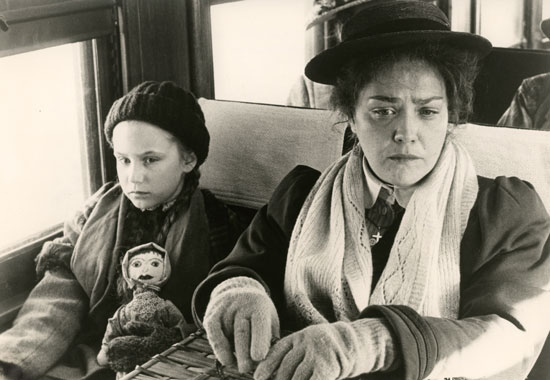
To help keep this site running: Willow and Thatch may receive a commission when you click on any of the links on our site and make a purchase after doing so.
Captivated by the vast landscape, Elinore acts quickly on her secret passion: to homestead a piece of land of her own. But fulfilling her year’s contract with Clyde may be as challenging as the oncoming winter – a winter of devastating blizzards, famine and isolation.
“Heartland” is a story of partnership and survival. As tough and stubborn as the land upon which they depend, Clyde and Elinore find mutual understanding and respect in the trials of frontier life.
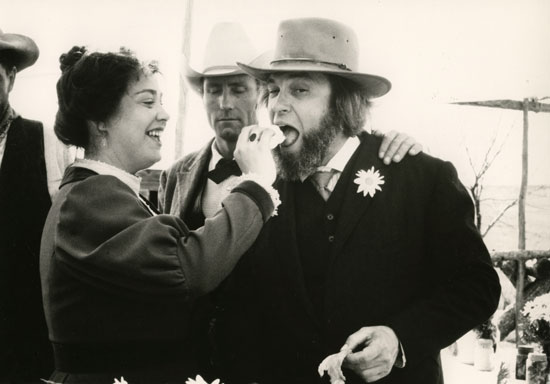
This is an amazing movie. Conchata Ferrell (Mrs. Elmsworth in The Buccaneers) and Rip Torn (Louis XV in Marie Antoinette) star in the PG-rated period drama.
Originally released as a motion picture in 1979, “Heartland” is included in The New York Times Guide to the Best 1,000 Movies Ever Made. Even still, it’s likely that you have never heard of his Edwardian era period film directed by Richard Pearce — even serious period drama fans may have missed it.
Starring Rip Torn, Conchata Ferrell, Barry Primus, Lilia Skala, Megan Folsom, Amy Wright, Jerry Hardin, Mary Boylan.
For a limited time, “Heartland” is included with Prime Video. That’s here.
“Heartland” is AVAILABLE to STREAM and is AVAILABLE on DVD.
Keep reading for 5 Reasons to Watch “Heartland,” and an interview with the filmmakers.

5 Reasons to Watch Heartland
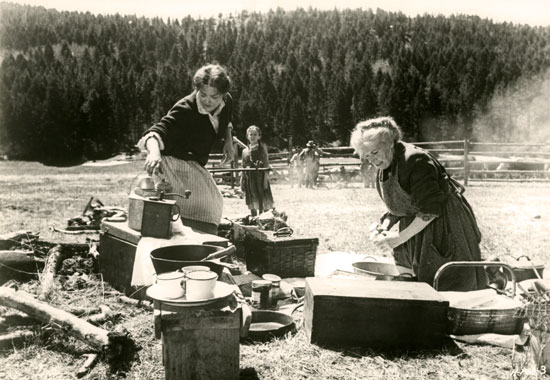
1. Critics loved it: In the words of Roger Ebert, “Richard Pearce’s Heartland is a big, robust, joyous movie about people who make other movie heroes look tentative.” Unanimously praised by film critics for its beauty and the uncompromising simplicity of its women-against-the-wilderness story (New York Times) this is a film “celebrating the toughness of spirit of American women on the Western frontier.”
2. The cinematography and details are stunning: Shot in the Snowy Mountains of Montana, the landscape is a major character, but the lighting, pacing, Edwardian era sets and costumes are also pitch perfect. Combined with superb acting and a gripping storyline, this film really is a period gem and doesn’t feel the least bit dated. (The photos in this article are black and white, but the movie is in color.)
3. It shows women as strong pioneers: Producers Annick Smith and Beth Ferris were moved to make this film precisely because previous movies about the frontier often showed women in limited roles, as “prostitutes with hearts of gold and loyal, pretty pioneer wives who kind of stood by the sides of their husbands and cooked dinner.” If you are interested in what it really would have been like to be a woman homesteader in the early 1900s, this period movie is for you.
4. It’s based in fact: The story is based on the life of Elinore Pruitt Stewart, author of Letters of a Woman Homesteader(1914) and Letters on an Elk Hunt by a Woman Homesteader (1915).
In 1909 Elinore travelled west for three days to work as a cook and housekeeper for Mr. Clyde Stewart, a fellow widower. The filmmakers worked very hard to make the film as historically and personally accurate as was possible. Using Stewart’s own books, letters and the recollections of her daughter, “Heartland” shows everything from relationships to daily rituals with great truth. For the majority of the period film this is wonderful to watch, but there are some true-to-life difficult moments as well, including death, which of course is part of life.
Note: This movie is rated PG, but you may want to screen before sharing with children. There is also a very controversial scene in which a real pig is killed on screen that will likely be hard to watch for anyone who is sensitive. (Read more about that below.)
5. It’s filled with authentic drama: The life of a pioneer wasn’t easy, but it was an adventure that called forth inner strength, and occasionally warranted a good laugh. This is a quiet film, but the drama portrayed speaks volumes. There’s even some romance along the way… in short, there’s lots of heart in “Heartland.” Highly recommended.
“Heartland” is AVAILABLE to STREAM and is AVAILABLE on DVD.
This one is well worth owning.
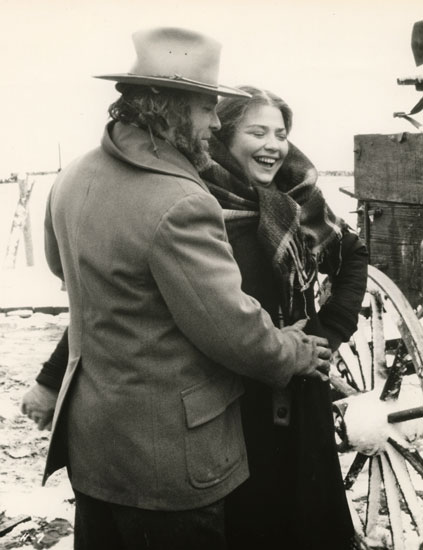
In the year 2000, about 20 years after the production of “Heartland,” William Marcus of Montana Public Radio sat down with the film’s executive producer Annick Smith and writer / co-producer Beth Ferris to discuss the film. The interview below is an excerpt from the original audio commentary of the film – Willow and Thatch loves this film so much that we transcribed it for you, with permission. It has been edited both for clarity and for brevity, and to keep out any major spoilers.
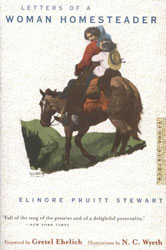 The MTPR interview begins with William Marcus (MR) asking the “Heartland’s” producers Annick Smith (AS) and Beth Ferris (BF) about their roles in the film. He first turns to Annick Smith:
The MTPR interview begins with William Marcus (MR) asking the “Heartland’s” producers Annick Smith (AS) and Beth Ferris (BF) about their roles in the film. He first turns to Annick Smith:
AS: “Heartland” was the first feature I ever worked on, and we did it because there was a big hole in the media and we felt we had to portray women’s lives as they were. My job as executive producer was to gather crew, cast, content, and make it happen.
WM: And Beth Ferris…
BF: I was involved with Annick from the beginning, both of us had had experiences in the wilderness and felt that Western women were not truly represented. I was involved as one of the main writers, and the co-producer of the film and that involved endless tasks.
WM: When we start out here, we see Elinore Randall getting on a train to come out west. It’s the beginning for her. When you started this project, what were your goals? What were you trying to do with this film?
AS: Our main idea was to try and make a film that showed truly the lives of women in the West in the pioneer period. At that time, in the 70s and before, most of what you saw were prostitutes with hearts of gold and loyal, pretty pioneer wives who kind of stood by the sides of their husbands and cooked dinner. We knew there was much more to be said about women in the West and we thought this would be an opportunity to do it. The National Endowment for the Humanities financed the research and the writing of the film, and some of the production. They were behind us because they all felt there was a need for such a thing.
WM: Beth Ferris, when you went to write the script, what resources 20 years ago, were available about women in the West in the early 1900s?
BF: There were not the kind of resources that are available now. In fact I went back and looked at some of the things I had, like an encyclopedia of the West which didn’t even mention the Enlarged Homestead Act of 1909 which would have brought her out here. The reason that Homestead Act, and there were many before that, was so important was that it allowed heads of families to homestead 320 acres. As a head of family, she could do that, but otherwise women couldn’t homestead by themselves. There were many women who were single who had absolutely no other opportunities in their lives, and this looked pretty good, like a good option.
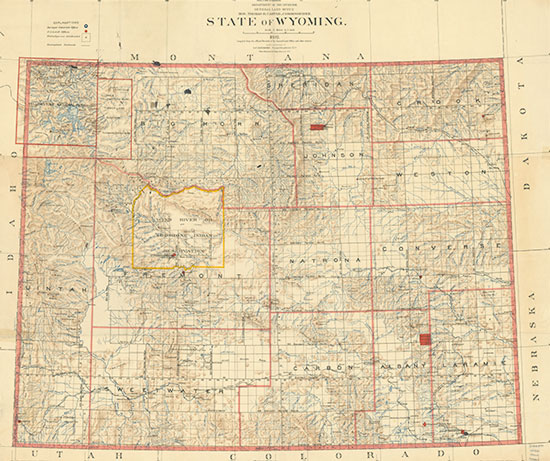
AS: I think we should mention that this is based on a historical woman, a real woman, Elinore Stewart.
BF: And it’s very historically accurate as well as being personally accurate.
WM: What resources did she leave? Diaries, letters?
BF: She wrote two books, one is called The Letters of a Woman Homesteader, and the other is Letters on an Elk Hunt by a Woman Homesteader. She was a writer; she was not educated but she became a writer on her own and she published in the Atlantic Monthly due to one of the people she worked for in Denver, as a housekeeper. She thought that she was such a good writer that she took the letters that she wrote from this homestead and had them published. Elinore used this money to buy more land.
WM: Elinore comes out as hired help for Clyde Stewart. How did most women get to the West?
AS: There is a variety of ways in which women came to the West. Starting at different eras, I think the first women came following the Gold Rush, like prostitutes. At the time Elinore came at the turn of the century, they mostly came on the railroad. The railroads advertised very strongly all over the East and in Europe saying that the Western Plains were like the Garden of Eden. They had photographs of gigantic melons and so on, so people were pretty much fooled about what to expect when they got to the West. Whatever women homesteaders there were that came alone, most of them came at that time.
WM: Did they stay when they found the reality was not as advertised?
BF: I think the percentage of homesteaders that stayed could only be measured by what happened during the Depression. That was twenty-some years later and what really culled out both women and men. I think a lot of women stayed and got married, which was one of the ways they could manage to support themselves, in a very practical sense. This was her story too.
AS: Many of them left the farms that they had homesteaded which became much larger places, because in the West in order to support a ranch, you have to have quite a bit more land than 320 acres, especially in this kind of dryland farming area. They stayed in so far as they moved to town, and there became really populated towns all over the West, and not only people living isolated on little homesteads. The story of staying is complicated. If you drive through the West, you’ll find all kinds of abandoned shacks and houses, but there are also all the old towns where people went…. which are now also getting abandoned.
WM: Sometimes today I think we say that domestic work is perhaps not equal to other employment. But these women worked very hard, and the fact that the homesteaders were able to stay there at all was because someone was able to keep the house going.
BF: She (Elinore) also – and this is really true according to her children – she planted the potatoes. She harrowed the fields with horses.
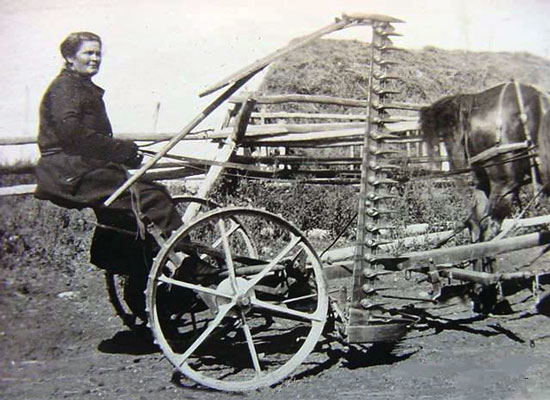
WM: We see her out there behind the horse.
BF: That was how she eventually died, she was run over. She wasn’t killed at the moment, but it was debilitating accident. Domestic work was like a funnel, it endlessly sucked in anything that you might consider having anything to do with the household and the farm.
Any woman who can stand her own company, can see the beauty of the sunset, loves growing things, and is willing to put in as much time at careful labor as she does over the washtub, will certainly succeed; will have independence, plenty to eat all the time, and a home of her own in the end. – EPS
AS: Everything had to be done by hand. You had to make your own soap, you had to make your own clothes, you had to wring your own wash. This was not a time of mechanization, so to do everything by hand in isolated situation like this, in a climate like Montana’s, that is back-breaking work plus add to that women had children child after child. It was a tough life.
WM: She also knows her worth. She stands with Clyde Stewart and says “I want this, I want this. This is what I should receive.” She was a business woman at that point as well. It was how she was going to make it there.
BF: She was 33 years old, in truth. She had been born in Texas, she had lost her parents young. She had raised her brothers and sisters by cooking for the railroad. She lost a husband, had a child, supported that child in Denver for years doing back-breaking work, loading coal in people’s furnaces and cleaning their houses. She knew that she had to have something better, or she wasn’t going to make it.
WM: Her daughter Jerrine was a resource to you as well for the film.
BF: Absolutely.
AS: We went to visit her in New York state, and her brother Robert. Jerrine was a woman about 80, and she had diabetes and was going blind, but her wits were completely about her. She had very sharp memories of her girlhood, and letters and photographs from her mother. She was a tremendous resource to us, and became a friend. She was a wonderful person. She could never come out to the homestead to see us shooting, but she did come to the premiere of the film in New York at the New York Film Festival, so she did get to see it.
WM: A lot of the scenes have the feel of being told through her eyes.
AS: I think that was largely the choice of the director Richard Pearce, the script is a script and it doesn’t tell you where to put the camera. Dick chose to use her innocent vision as a way of getting into the story. It’s such an alien world to her and that lets us see it, freshly, as a child.
WM: The director, I think, worked exceptionally well with the actors to give a sense of realism that Rip Torn really did work with horses, or can work with horses. They really were authentic in that representation.
BF: Well, Rip and Barry Primus went to a great extent to learn. Neither of them were horse people, and neither of them understood cattle. The director was extremely precise about what was real and actually used the neighboring homesteaders as consultants.
AS: Conchata Ferrell grew up in Arkansas, so she did have a rural touch, she understood rural living. But these are serious method actors. Barry Primus went to stay at a ranch where they were branding to learn about that, Rip Torn could be seen day after day roping fences, to practice roping. They worked very hard to be authentic, and as Beth said, were coached by the local people, by real cowboys and farmers.
BF: We needed (the character of Grandma Landauer)…another woman was absolutely essential. It was such a stark number of characters and we really needed to have a relationship to show that women depended absolutely upon one another for medicine, for childbirth, for companionship.
WM: How did women interact? Certainly they were great distances from each other. Were letters important then, or coordinated meetings?
AS: There were letters, and then there were events where people got together, like weddings and funerals. People would go to dances in their wagons, and go for miles. Of course at that time there were many homesteaders out on the plains. It wasn’t the way it is now.
BF: No, it wasn’t, and one of the really important aspects of getting together were quilting bees. I did a film later on quilts (Hearts and Hands, a social history of the 19th century as seen through the medium of quilt making), and you can see some of the quilts throughout this film which were actually from the area. But they would have gotten together. That would have been solely women getting together for fun and creation.
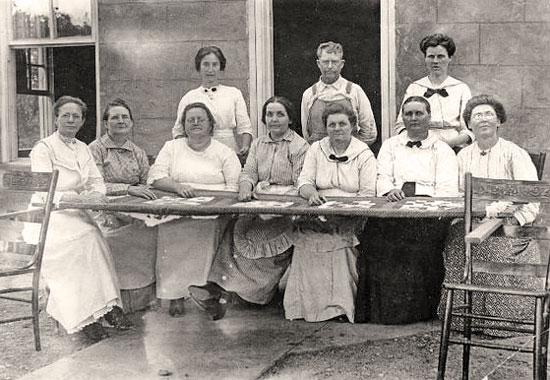
AS: Another time would have been marketing. You would have to go to town to get supplies. Like there were certain days you did laundry, there were Saturday markets. People would then visit and see each other and spread the news. One of our intentions in this film was to make a film about work. You see very few movies, Hollywood does not spend a lot of time showing people working, but that’s what people do, so that was our intention.
BF: That’s very true…on a ranch that is all people do.
WM: There are scenes of just quiet landscape as well. The film was shot near the Snowy Mountains, northeast of Judith Gap about the center of Montana. In one way it has the beauty of the mountains, but also the more barren landscape to the east. That must have been a purposeful choice. Why did you set it there?
AS: We looked all around for the proper setting to film this, and one of the places we did look was in Wyoming on the Utah border, which is where the real Stewart Homestead is, and we actually found the homestead cabins and graves of the Stewart family. We chose not to film it there for a couple of reasons. We would have had to completely rebuild the homestead, it was falling down.
Secondly, it was very remote and along way to Salt Lake City, so we started to look around closer to home. We found this area in North-central Montana, which was still very much the way it had been in the time when the pioneers were there: great, huge open prairies within mountains. We did show everything from branding to castrating, and some people felt it was a little tough, but that’s the way it is. If you eat meat, this is how it happens.
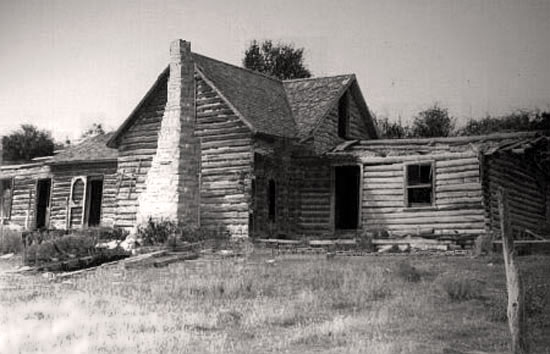
WM: The authenticity is something people don’t really appreciate because so much in films is constructed. How much did you rely on the community for that authenticity?
BF: A great deal. In the branding scene, these are actual people from a nearby ranch, and in scene after scene, whenever you see a group of people together those are local people. We couldn’t have done it without them. They were incredibly helpful, and interested. They came and watched the shooting day after day, they became part of it and invited actors to their homes; it really was an interaction.
WM: There is a time when Elinore kind of personifies the romantic of the West. She’s seen some hard times at this point, but she still says “What a beautiful place, I’d love to have my ranch here” and Grandma Landauer says that will be seven feet of snow there in the wintertime. How did you knit in that romantic vision that so many people have with what you wanted to portray as the realistic experience in the West?
BF: In a sense, she carries the more romantic view, and there’s the stoic Clyde, who in fact represents the alternate vision. And so does Grandma Landauer. Here are the wildflowers, yes, but they’ll be buried pretty soon.
AS: You have to have both things operating, I think that’s how it happens in real life. There are the people with the vision and the romance, and other people with practicality, and often those are the best marriages.
BF: It creates the tension that you need in the creation of a script.
AS: Then there are other things which are more stylistic, like trying to focus on the plains and the barrenness and the openness and the space, rather than on the prettiness of the mountains. Our cinematographer Fred Murphy and our director Richard Pearce and all of us were agreed that we wanted to emphasize the space, the distance, the Great Plains…The famous movie Shane concentrated on the beauty of the mountains and the Tetons, and that was one kind of movie, and that was a mythical story. We were doing an anti-mythical story, and the pig is part of that.
BF: (The killing of the pig) is the most troublesome scene of the entire film, the one we got the most trouble for, and the one that is somewhat troubling to me, in the way that it was edited. Not particularly in what happened. That year there were two independent films with pigs shot in them. It was something that was actually in the letters of Clyde and Elinore, and I didn’t just put it in there to show something crude, it actually was a very important part of their lives that they butchered this pig. This is how they made it through the winter.
AS: We almost lost our main actresses, because of this scene. Conchata Ferrell and Lilia Skala both did not want us to kill the pig. There was a constant battle going on, around the days we were supposed to shoot this scene, and threatened revolts. Finally we said, this is the way life is and we are going to do it. There were two camps fighting on the set, and it was pretty serious.
WM: Were you consciously working all the time to dispel that notion, and you put that scene and the branding scenes in, and the hardships and the work, to constantly chip away at that shining light above the mountain peaks kind of view that people have?
BF: I don’t know how conscious it was, at least in the writing, to de-romanticize everything. It was more “let’s show it how it was.”
AS: Of course we used that pig, that pig fed us.
WM: To these people, the characters at that time, the vast landscape, the windswept romantic vision, it was not that. It was environment and land to be conquered. How did you work that out?
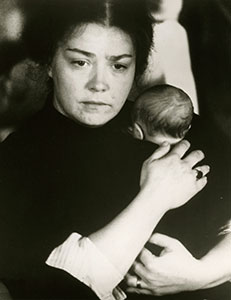 AS: It was many things, I think. In general it was free land to make a living from. I think it (the romance of place) couldn’t help enter into people’s consciousness. This whole sense of living in space and weather is something that created the what we call the Western character, I believe. At least in some part, self-reliance and stoicism, and being able, as Elinore did, to deal with severe unexpected emergencies. And to take it, and not break apart and collapse. Those are the survivors, the people who are able to do that. Other people didn’t. Ole Rolvaag’s Giants in the Earth: A Saga of the Prairie is the story about a woman who went crazy in this kind of landscape and situation – it just was too much. And there were people who went crazy. Elinore was a survivor.
AS: It was many things, I think. In general it was free land to make a living from. I think it (the romance of place) couldn’t help enter into people’s consciousness. This whole sense of living in space and weather is something that created the what we call the Western character, I believe. At least in some part, self-reliance and stoicism, and being able, as Elinore did, to deal with severe unexpected emergencies. And to take it, and not break apart and collapse. Those are the survivors, the people who are able to do that. Other people didn’t. Ole Rolvaag’s Giants in the Earth: A Saga of the Prairie is the story about a woman who went crazy in this kind of landscape and situation – it just was too much. And there were people who went crazy. Elinore was a survivor.
BF: And that’s what we wanted to show. Not only did the women help the men, they were the other half of the surviving team.
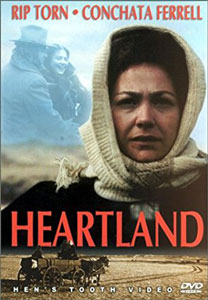 You can hear the full interview on the DVD.
You can hear the full interview on the DVD.
For a limited time, “Heartland” is included with Prime Video. That’s here.
Letters of a Woman Homesteader is available as an Audible Audiobook. Listen to a sample here.
Learn more about Elinore Pruitt Stewart, Writer and Homesteader.
Annick Smith is a writer and filmmaker from western Montana. Born in Paris, she grew up in Chicago, lived in Seattle, and has settled in Montana for over fifty years. She was a filmmaker first, producing the prize-winning feature “Heartland” and was a co-producer of A River Runs Through It. Smith was a founding member of the Sundance Film Institute and the Independent Features Project.
Her fiction has been published in Story magazine and her story “It’s Come to This,” appeared in Best American Short Stories 1992, won a National Magazine Award for short fiction, and has been widely anthologized. Smith’s most recent book is a memoir, road trip, dog book, Crossing the Plains with Bruno. Other books include an earlier memoir, Homestead, a collection of essays In This We are Native, a book about Oklahoma’s tall grass prairies, Big Bluestem and the anthologies, The Last Best Place, co-edited with William Kittredge and The Wide Open: Prose, Poems, and Photographs of the Prairie co-edited with Susan O’Connor.
She lives on a homestead ranch in Montana’s Blackfoot Valley, often with companion William Kittredge and her sons and their families.
Currently, the real Stewart Homestead, which is located in Burnt Fork, Wyoming, is in a state of disrepair and cannot be visited as it is on private property. Those interested in researching Elinore’s life can contact the Sweetwater County Historical Museum.

If you enjoyed this post you’ll want to wander over to the Period Films List – the best costume and historical period dramas, romantic period movies, all sorted by era and theme. You may be especially interested in the Edwardian era list .

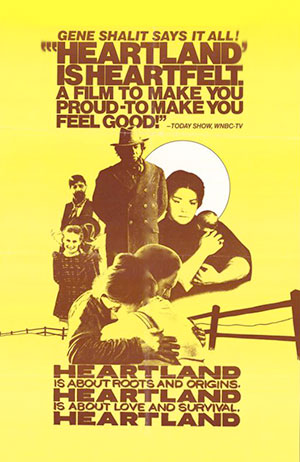

Michael Wire
February 23, 2018 at 6:20 pm (8 years ago)I liked the article, thank you from the Stewart family. My mother (Jerrine), loved this movie and said that it was a good representation of life on the ranch.
Abby
May 25, 2017 at 8:46 am (9 years ago)I’ve only just stumbled across your site, so maybe you’ve already written about these and I haven’t found the posts yet, but this movie (besides sounding LOVELY and like something I need to watch immediately) reminds me of Sweet Land and Days of Heaven. Both romanticize life on the frontier to some extent in a melodramatic sort of way, but they also present some of the hardships and portray women more thoughtfully than the “prostitutes with a heart of gold” trope.
Willow and Thatch
May 25, 2017 at 9:02 am (9 years ago)Hi Abby – welcome! Those are two favorites, and are on the list for an upcoming post. Not long ago I posted a photo on the Willow and Thatch Facebook page of my 3 different copies of Days of Heaven 🙂 One copy will be part of a giveaway.
Sue
April 27, 2017 at 10:07 am (9 years ago)I cant find heartland on netflix or amazon. The only one that comes up is with anthony hopkins about a Welshman.
Willow and Thatch
April 27, 2017 at 11:17 am (9 years ago)Just follow the link in the post. But here you go: you can stream Heartland here.
Sosa
April 26, 2017 at 7:47 pm (9 years ago)Thanks for the recommendation! It sounds great. I’ll give it a watch tonight 🙂